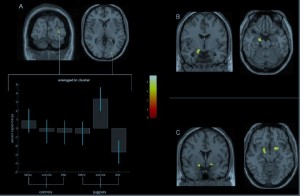You can Juggle too!
Juggling; an ancient form of art and entertainment that still exists today. Whether it’s the entertainment industry, street performing, or even your local community, you’re likely to find that it is filled with jugglers of all sorts. Now the first thing that comes to people’s minds when they think of juggling is typically a clown or circus performer of some sort. Being an avid juggler myself, and involved in the unique sub-culture of the juggling community I can tell you that most jugglers are like you and me, not clowns or circus performers. The majority of members in the juggling community do not make a primary living directly off of their juggling skills or other stage worthy talents as most clowns or circus performers do.

Juggling is not an overtly difficult skill to learn or teach yourself as one might think, even if you consider yourself to not be very coordinated, you would be surprised how much progress you would make if you tried to learn how to juggle three balls. There are many different avenues for you to teach yourself how to juggle and get involved with the local juggling community. Most large cities have a juggling club of sorts that meets on a regular basis. Check here if you are looking for a club near you. If you are looking for lessons online or don’t want to go to an actual juggling club, world famous juggler and founder of the World Juggling Federation, Jason Garfield has a great video that teaches the basics of learning how to juggle three balls. If you give learning how to juggle a chance, you will find that juggling three balls is not a terribly difficult skill to teach yourself, even less difficult if you have some instruction in person.
Benefits of Juggling
Juggling is a total mind body workout, and from my experience, you are working virtually every upper body muscle from the reaching and throwing motion of juggling as well as bending down and picking up the props you drop. You can even build or tone your muscles by juggling heavier objects or more objects at once if you want to learn how to juggle more than three balls. However most people fail to realize that juggling is a great exercise for your brain. For one, you are focusing on multiple objects in the air and the pattern as a whole all at the same time, which works both sides of the brain as objects are continuously crossing between the left and right sides of your body, which is said to create more neural pathways and connections in your brain according to PubMed Central. “Exercising” your brain may not seem like something you need to do, however your brain is like a muscle in the sense that you need to do exercises or activities that stimulate your brain and sharpen your mind. Otherwise your brain will not be as “strong” as it could be, just like any other muscle in your body.
Your Brain and Juggling
Multiple experiments and many hours of research have been conducted at some of the world’s premier universities and institutions in order to find out how learning a new skill, such as juggling, impacts the brain structure and neural path ways of the brain. University of Oxford and University Regensburg in Germany conducted similar experiments where they taught a pool of test subjects how to juggle and had them juggle every day for 4-6 weeks while the other half acts as the control group. The pattern they were taught is called the three ball cascade which is the most basic juggling pattern there is. MRI’s of the participant’s brains are taken before and after the experiment for the researchers to keep track of any potential changes in the brain structure of the participants. Researchers at the University of Regensburg in Germany noticed that in the juggler’s brain there was a notable increase in the density of the gray matter in their brain. This is not saying that their brain physically grew in size, but the density of the gray matter increased.

This is significant because it is commonly known that it is more difficult for the brain to increase in size or density in certain areas as an adult. If simply learning a skill, such as juggling, can induce these changes in an adult’s brain, it is plausible that learning other skills may help increase your brain power as an adult. However, even more interesting, is that the participants of these studies well called in after a few weeks to see how their brain reacted after they stopped juggling. After looking at the MRI’s of the participants, the researchers noticed that their brain had returned to their “normal”, pre-juggling state. The density of the gray matter in their brain returned to its original density before they learned how to juggle. So as soon as the improvements in the brain came, they receded just as quickly. This raises the question, how do you make these improvements more permanent?
Since juggling on a regular basis has been shown to improve brain density in gray matter, more and more people are turning to juggling recreationally to help alleviate the symptoms of ADHD, dyslexia, and autism. Gray matter is the part of the brain that does all the calculations and computations, and by increasing the density of the gray matter in your brain, your brain will be able to perform more efficiently, just like upgrading the central processing unit (cpu) of your computer. Just as these three impairments effect brain speed in certain areas, social impairment, reading comprehension and speed, or just your attention span in general, increasing the computing power of your brain will help in reducing the common symptoms of these impairments. In fact there have been multiple instances linking juggling to the alleviation of symptoms of ADHD, dyslexia, and autism. As for a famous example, now world renowned juggler and performer David Ferman, once struggled with ADHD as a child. When he took on juggling, his parents noticed that his attention span had increased and he was able to sit still for extended periods of time. Now David has won multiple medals in juggling competitions and has even appeared in the finals of the famous television program, America’s Got Talent. Even more cures for brain related diseases and impairments will be discovered if scientists can understand how the brain structure changes while learning a new skill. Since skill based training such as juggling can show differences in brain structure, scientists can perform similar experiments to the ones done in Germany and at Oxford, to further study how brain structure is composed, and potentially develop cures to more complex brain impairments such as dementia and Alzheimer’s. But no matter how advance this research seems to us, it is quite easy to see how learning how to juggle can have a positive impact on the structure of our brain.
Hopefully now you see why juggling is such a unique and fascinating skill to have, other than to simply enjoy one performing it for your entertainment. Recreational juggling does not mean you are a clown or circus performer, and there is no negative stigma from being a juggler, because you can choose whether to share your newly found talent in front of an audience or keep it to yourself. The physical benefits of juggling extend from working out and toning virtually your entire upper body, to the leg and back strengthening from picking up the props you drop. Even more to your benefit is the positive impact learning how to juggle has on the structure of your brain and the density of the gray matter in it. Top universities and scientists are proving this point with their simple yet impactful experiments that are tracking the changes in the brain of people who are learning how to juggle. The results of these experiments are leading to solutions for people with minor mental impairments such as dyslexia, autism, and ADHD. Even in people without these impairments, juggling is shown to increase gray matter density in the brain, which essentially boosts your brain’s computing abilities, allowing you to think faster and in new ways. The way juggling impacts our body and mind is unlike any sport or exercise out there, and because it is surprisingly easy to learn, even as an adult, you can begin to sharpen your mind, and even your body today if you put your mind to it and learn how to juggle.
Works Cited
Bishop, Dorothy. Curing dyslexia and attention-deficit hyperactivity disorder by training motor co-ordination: Miracle or myth? 10 March 2010.
Booker, Karene. Scientists discover how brains change with new skills. 4 April 2013.
Elsevier. Protecting your brain: ‘Use it or lose it’. 25 April 2012.
Ferman, Shira. How Juggling Helps Kids With ADHD. 4 March 2012. <http://www.youtube.com/watch?v=g6GZYGuhjzo>.
Harder, Jeff. Does juggling exercise your brain? 18 Febuary 2012.
Janina Boyke, Joenna Driemeyer, Christian Gaser, Christian Bu¨chel, and Arne May. “Training-Induced Brain Structure Changes in the Elderly.” The Journal of Neuroscience (2009): 7031–7035.
McGonigal, Kelly. Your Brain on Meditation. n.d.
Niedzialkowski, George. “Juggling and Health.” Juggler’s World 38.1 (1996).
Oxford, University of. Juggling Enhances Connections In The Brain. 17 October 2009.
Paddock, Catharine. Juggling Boosts Brain Connections. 9 October 2009.
Sun, Edna. Can Juggling Improve Your Brain? 26 January 2014.

Sweet blog! I found it while surfing around on Yahoo News.
Do you have any suggestions on how to get listed in Yahoo News?
I’ve been trying for a while but I never seem to get there!
Thank you